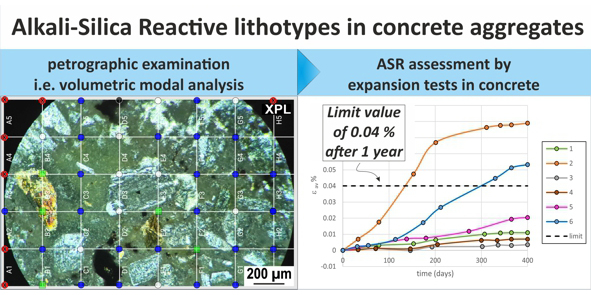Potential Alkali-Silica reactivity of Italian natural aggregates for concrete: assessment according to UNI 11530 and UNI 11604 standards
DOI:
https://doi.org/10.13133/2239-1002/18434Abstract
The study focused on natural aggregates used in concrete, sourced from six different production sites in Italy, and assessed their potential alkali-silica reactivity through two national standard methods. The first method, UNI 11530, involved a detailed petrographic examination, utilizing modal analysis for identifying and quantifying potentially alkali-reactive lithotypes. The second test method, UNI 11604, involved an accelerated expansion test at 38 °C and high relative humidity on concrete including an established combination of size fractions of aggregates. This method allows the assessment of aggregate reactivity based on concrete expansion after 1 year of testing and an expansion limit value of 0.04%. A correlation analysis was done on the results from both test methods aimed to establish a relationship between the type and content of potentially reactive lithotypes of aggregates and concrete expansion. Chert and Chalcedony were identified as the primary contributors to concrete expansion. The sum of Chert and Chalcedony contents in the combined aggregates was found to vary between 1.8 vol% and 10.1 vol%. A critical content of approximately 5.5 vol% for the sum of Chert and Chalcedony was identified for deleterious expansion development in concrete subjected to UNI 11604 test method. This limit proves valuable in predicting the expansive behavior of aggregates where petrographic analysis has identified the presence of lithotypes potentially reactive to alkalis.

Downloads
Published
Issue
Section
License
Copyright (c) 2024 Periodico di Mineralogia

This work is licensed under a Creative Commons Attribution 4.0 International License.

